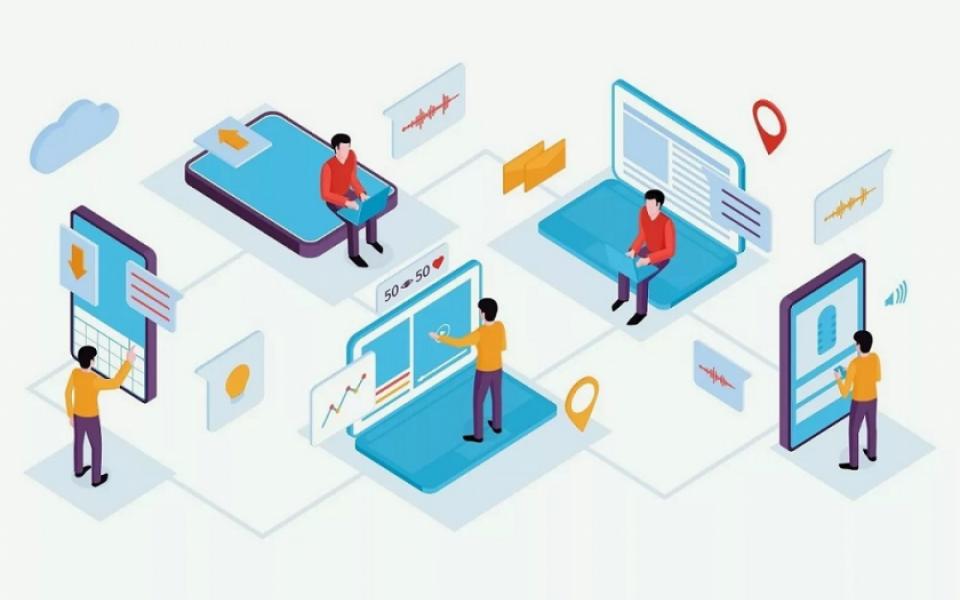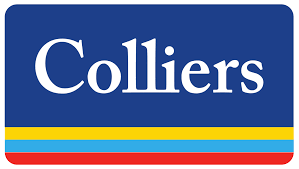In a world where workforces are becoming increasingly distributed and remote, businesses are grappling with how to stay connected, manage workflows, and maintain productivity. With teams working from different locations and often different time zones, keeping tasks organized and maintaining seamless communication has become a challenge. Add to this the complexity of managing multiple documents and ensuring they are easily accessible and up to date, and the need for an integrated system becomes evident.
This is where no-code development comes in. The no-code tech platforms are designed to simplify the creation of workflows and applications by enabling users to build custom solutions without writing a single line of code. You don’t need to be a developer to use these platforms; they offer intuitive interfaces and drag-and-drop features that make building and connecting digital tools easy for anyone. No-code platforms are becoming increasingly popular as businesses look for ways to streamline their operations, automate tasks, and facilitate better collaboration between remote teams.
In this blog, we’ll explore how you can use no-code platforms to connect and manage your online tasks, documents, and remote teams, creating an efficient and productive work environment.
1. Centralized Task Management: Bring Everything Under One Roof
In a typical work setting, tasks are often scattered across various platforms. Emails, spreadsheets, project management tools, and messaging apps all hold pieces of the puzzle, making it difficult to see the big picture. No-code platforms allow you to centralize task management by creating a unified system tailored to your organization’s specific needs.
Imagine a workspace where all tasks are visible in one place, categorized by project, priority, or deadline. With no-code platforms, you can set up workflows that automatically assign tasks to team members, set deadlines, and track progress—all without requiring manual intervention. You can even set reminders and notifications to ensure that nothing is missed, whether it’s a small internal task or a client-facing project. By centralizing task management, you eliminate confusion, minimize the risk of missed deadlines, and make it easier to keep everyone on the same page.
Moreover, no-code platforms can integrate with the tools you’re already using, pulling data from multiple sources into one dashboard. This makes it simple to track progress, measure team productivity, and adjust priorities as needed.
2. Automating Repetitive Processes: Let the System Do the Work
Managing tasks and workflows manually can be time-consuming and error-prone. Many teams spend hours each week on repetitive tasks such as sending email updates, moving documents from one folder to another, or updating project statuses. These tasks, though necessary, take time away from more strategic activities that could better contribute to the team’s overall goals.
No-code platforms offer automation features that allow you to create workflows to handle these tasks automatically. For example, you can set up workflows that automatically send a notification when a task is complete, update a shared document when a milestone is reached, or create a follow-up task when a project is marked as done. Automating these processes not only saves time but also ensures that important tasks are never overlooked.
Automation helps your team stay focused on higher-value activities. Instead of constantly managing small, repetitive tasks, team members can concentrate on the work that requires creativity, problem-solving, and strategic thinking. This shift in focus leads to improved productivity and better results for your organization.
3. Seamless Document Collaboration: Keep Everyone on the Same Page
Managing documents can be a logistical nightmare, especially in a remote working environment where team members are located across different cities or even countries. It’s easy to lose track of which version of a document is the most current, who made the last edit, or whether the right people have access to the files they need. This disorganization can lead to confusion, duplicated work, and delays.
No-code platforms allow you to build a document management system that keeps all your files organized and accessible from a single location. You can create workflows that automatically update documents when changes are made, notify relevant team members when a file needs their input, and ensure that everyone always has access to the most recent version of a document. Whether your team is working on a shared presentation, client reports, or internal documentation, these systems enable real-time collaboration, ensuring that everyone is working with the same, up-to-date information.
Another advantage of using no-code platforms for document management is the ability to control access permissions. You can easily set up roles within the system, granting certain team members the ability to view, edit, or comment on specific documents. This ensures that sensitive information remains secure while allowing your team to collaborate efficiently.
4. Improving Remote Team Communication: Real-Time Updates and Transparency
Remote teams often struggle with maintaining clear communication and staying updated on project statuses. Without the ability to quickly stop by a coworker’s desk or hold spontaneous meetings, information can get lost, and team members may feel disconnected. This is particularly challenging when teams are spread across different time zones.
No-code platforms address this challenge by offering real-time communication features and integrations that keep everyone connected. With the right setup, team members can receive instant notifications about task updates, project progress, and changes in priorities. Whether these notifications are sent via email, internal messaging systems, or project dashboards, they ensure that remote workers remain informed and aligned with the rest of the team.
By automating communication around key project updates, you can also reduce the need for unnecessary meetings and status check-ins. Instead of holding a meeting to discuss where things stand, the team can simply check the project dashboard or receive automated updates when milestones are reached. This streamlines communication and allows team members to focus on the work that matters most.
5. Customized Dashboards: A 360-Degree View of Your Projects and Team
One of the most powerful features of no-code platforms is the ability to create custom dashboards. These dashboards provide a comprehensive view of your team’s tasks, project statuses, and overall productivity, all in one place. By pulling data from various tools and workflows, a dashboard gives you real-time insights into the progress of your projects and the performance of your team.
Custom dashboards allow you to track key metrics, such as project timelines, individual task completion rates, and team workloads. You can even create visual reports that show how much time is being spent on different tasks or projects, helping you identify bottlenecks and allocate resources more effectively. This level of transparency makes it easier to manage remote teams, ensuring that everyone is working efficiently and that potential issues are addressed before they become major problems.
Additionally, dashboards provide remote team members with visibility into their own performance and progress. This level of insight encourages accountability, allowing team members to take ownership of their tasks and stay focused on meeting deadlines.
6. Scalability and Flexibility: Build the System That Grows with You
Every organization is different, and your team’s needs will evolve over time. The beauty of no-code platforms is that they offer the flexibility to scale and adapt as your team grows. Whether you’re managing a small startup or a large enterprise, you can start with a simple workflow and expand it over time, adding more automation, integrations, and custom features as needed.
This scalability allows you to continuously optimize your processes without the need for costly and time-consuming development work. As your team’s needs change, you can quickly modify existing workflows or create new ones, ensuring that your systems remain aligned with your organization’s goals.
Moreover, the flexibility of no-code platforms means that they can be tailored to a variety of industries and use cases. From marketing to sales, HR, and operations, no-code solutions can be used across different departments, bringing consistency and efficiency to your entire organization.
7. Security and Compliance: Protect Your Data and Stay Compliant
As remote teams handle more data and collaborate across various systems, maintaining security and compliance is critical. No-code platforms are designed with security in mind, offering features such as role-based access control, audit logs, and encryption. These platforms allow you to set up permissions that control who can view, edit, or manage specific tasks and documents, ensuring that sensitive information is only accessible to the right people.
Additionally, many no-code platforms are compliant with industry regulations and standards, making it easier for your organization to stay on top of compliance requirements. Whether you need to meet GDPR, HIPAA, or other data privacy regulations, these platforms offer built-in tools that help you maintain compliance without sacrificing functionality.
Conclusion: Harness the Power of No-Code to Boost Your Team’s Productivity
In today’s digital age, connecting online tasks, documents, and remote teams is essential for staying competitive. No-code platforms offer the perfect solution by enabling businesses to automate workflows, manage tasks more efficiently, and foster better collaboration among distributed teams. By centralizing task management, automating processes, enhancing document collaboration, and improving communication, no-code platforms help organizations create a seamless, productive work environment—without the need for complex coding or IT support.
The power to connect your tasks, documents, and remote team is now in your hands. With no-code platforms, you can build customized, scalable solutions that grow with your business, helping you stay agile and efficient in an ever-changing landscape.
































